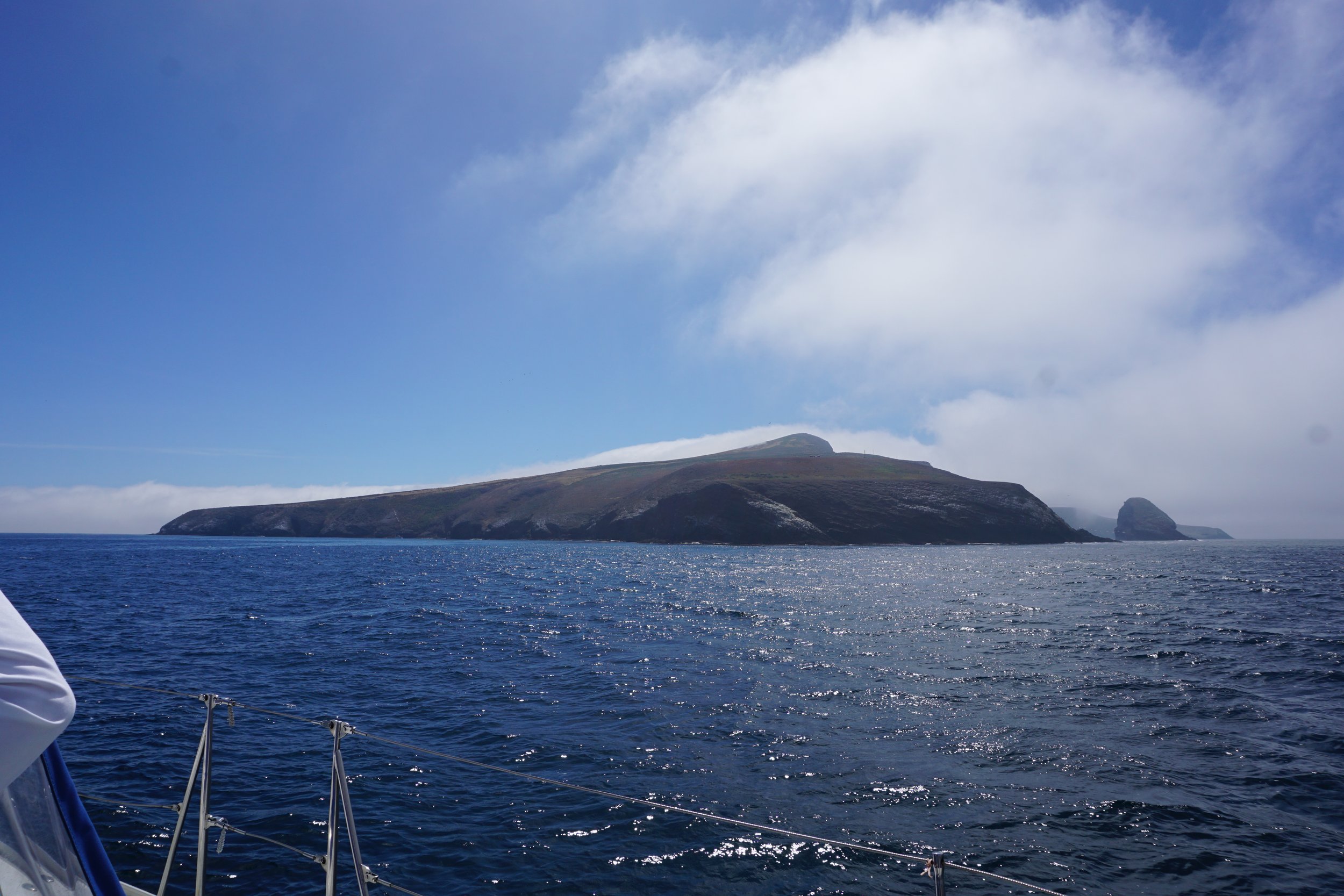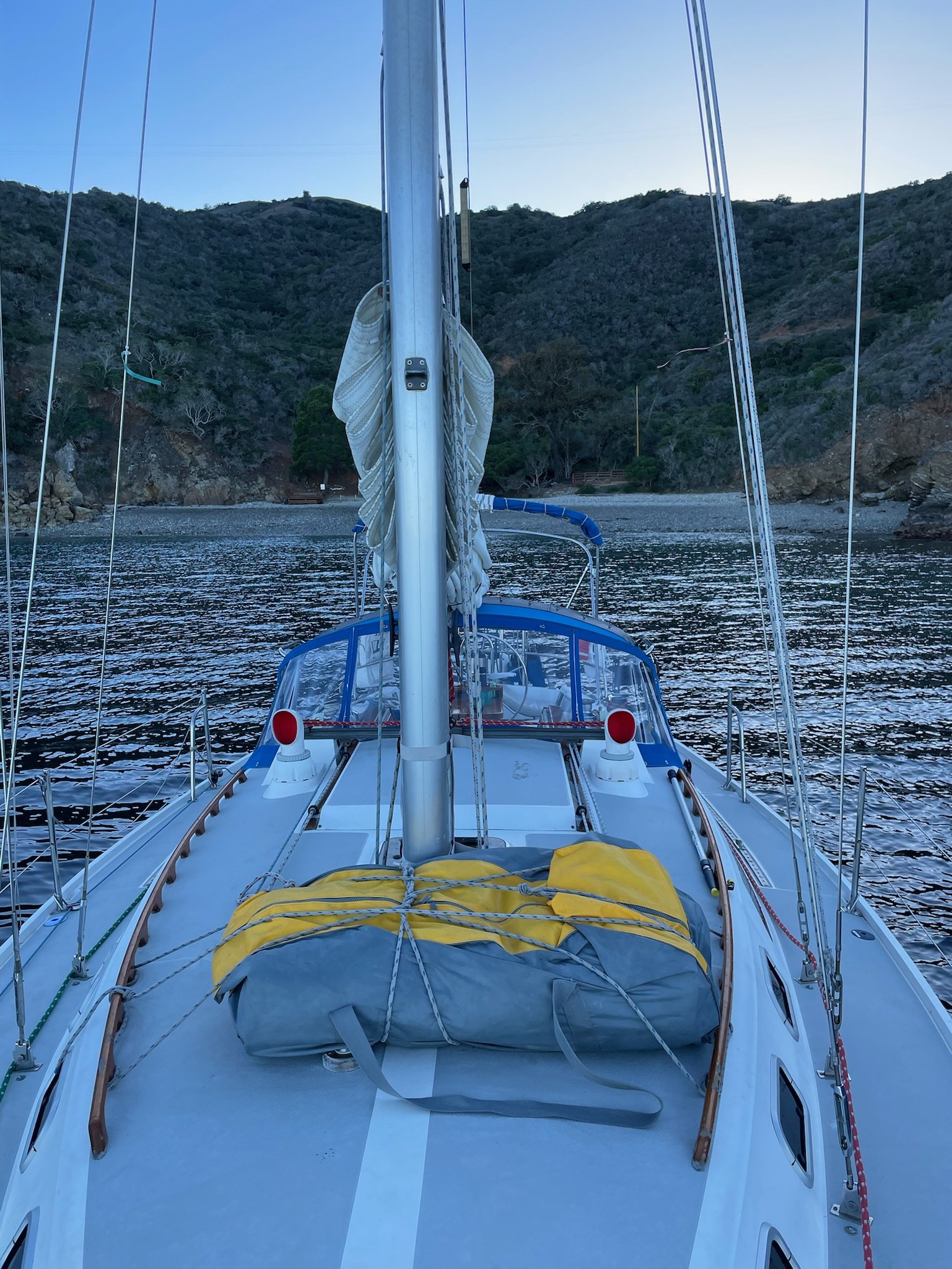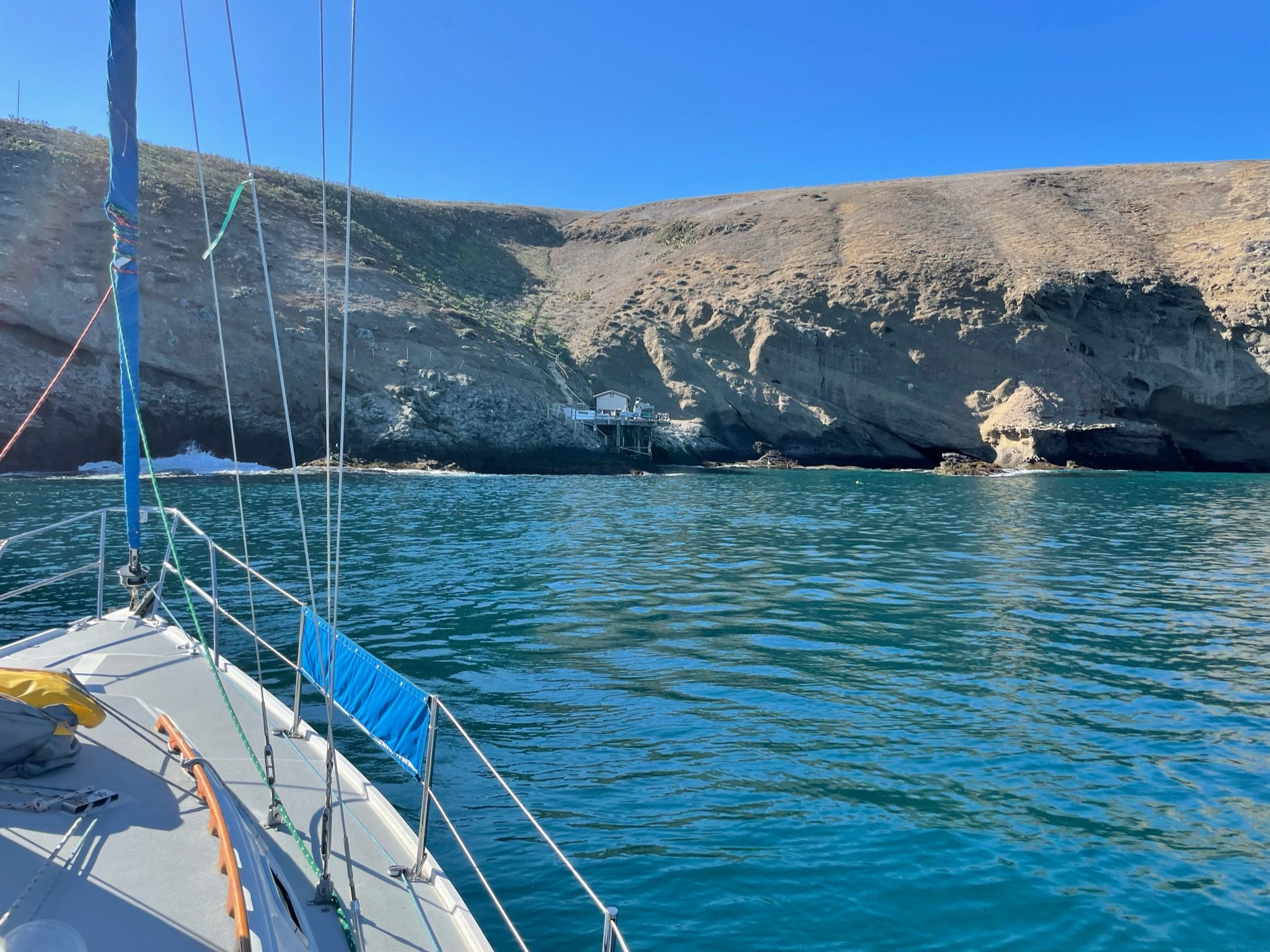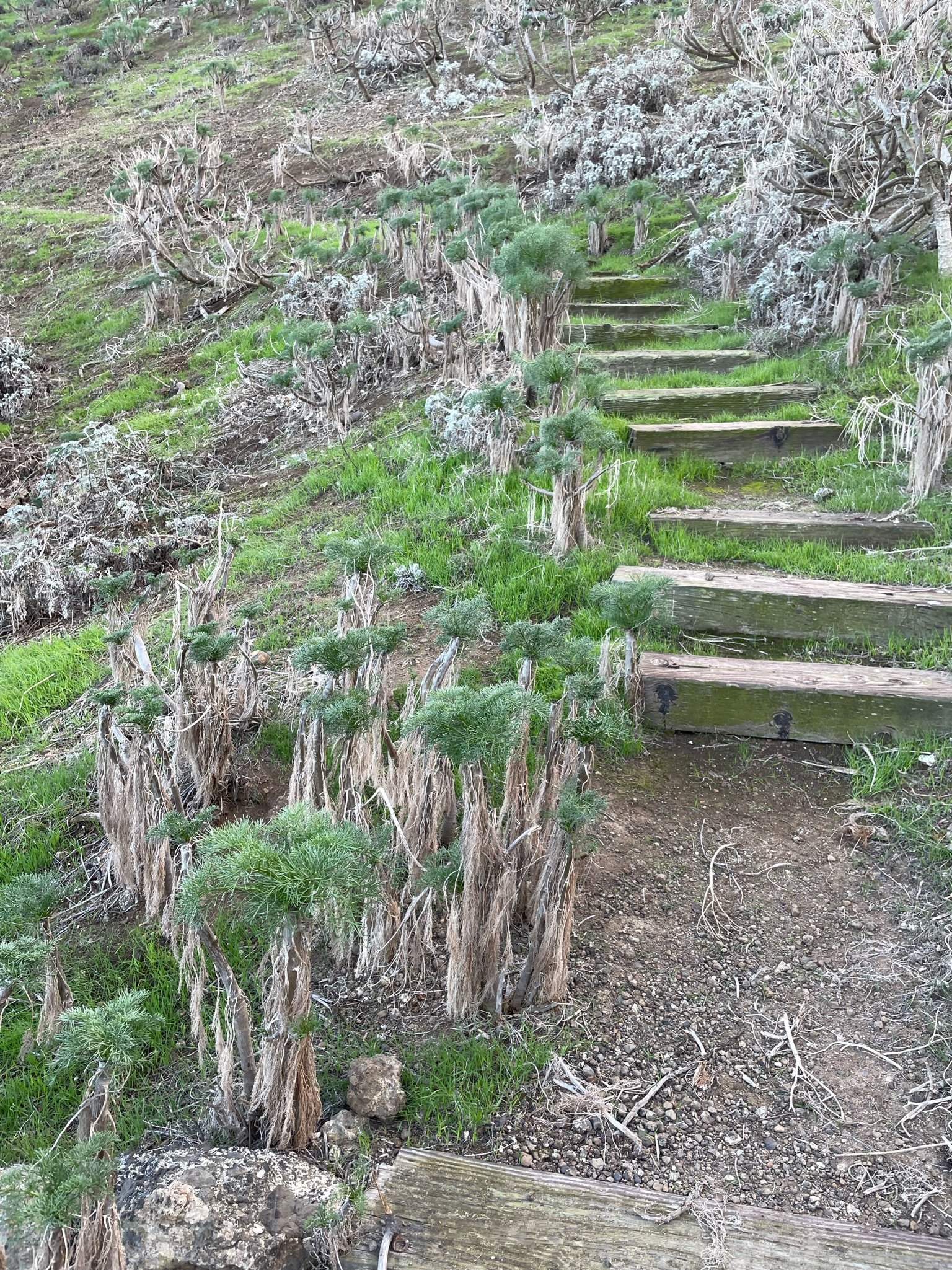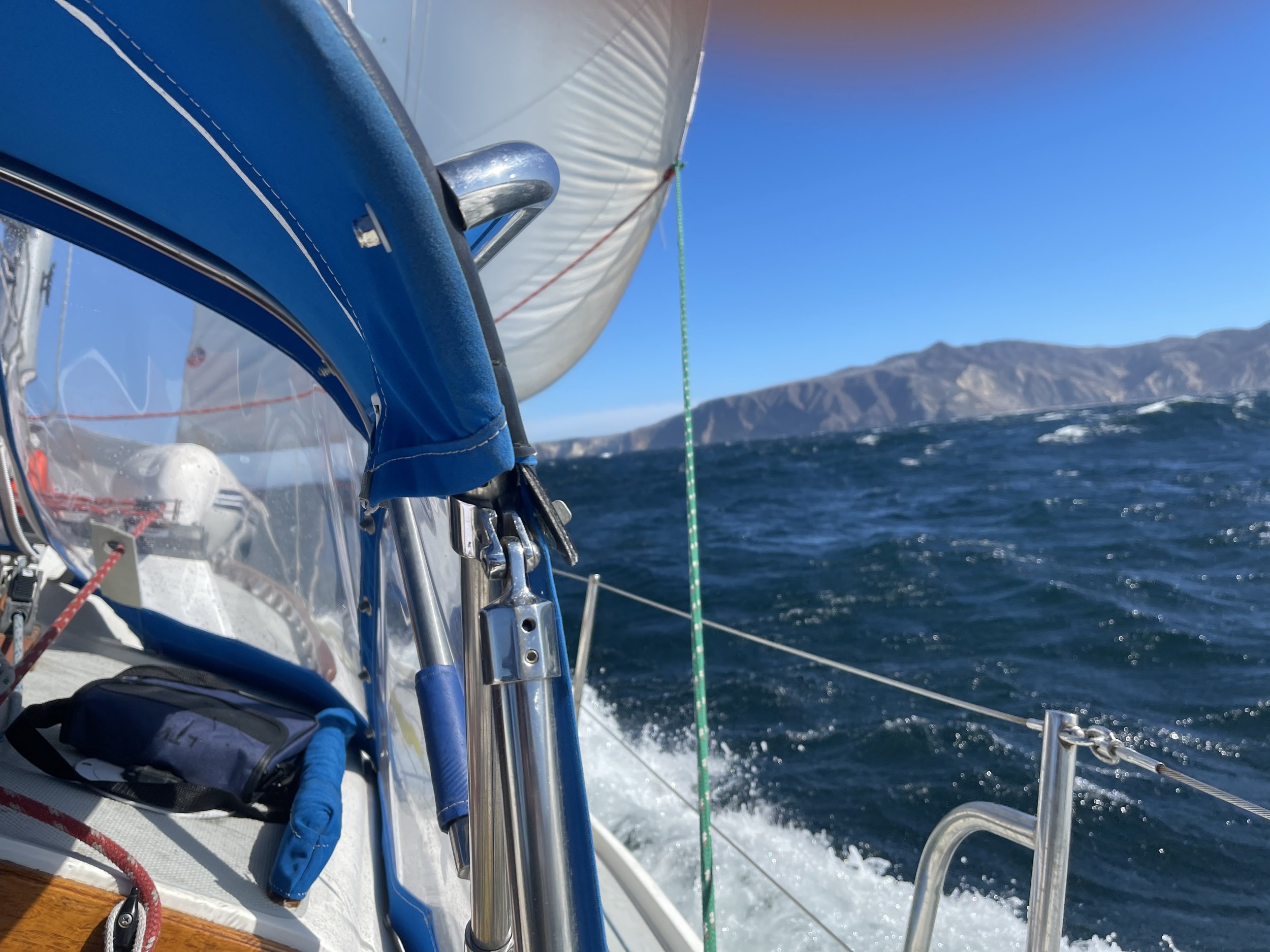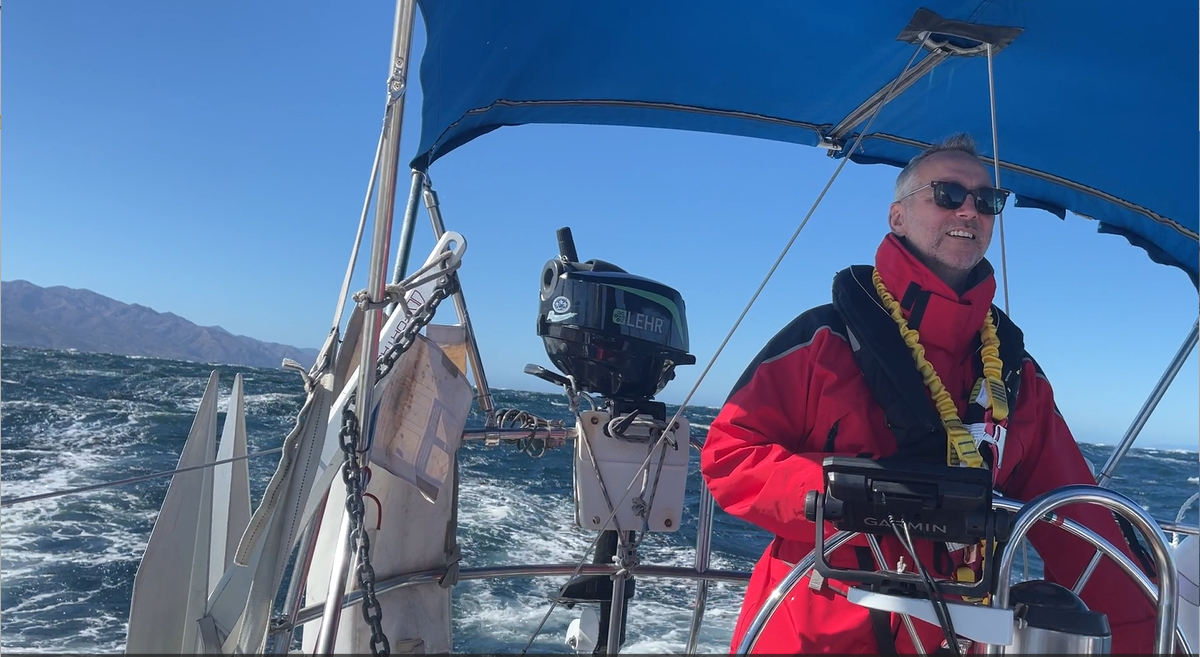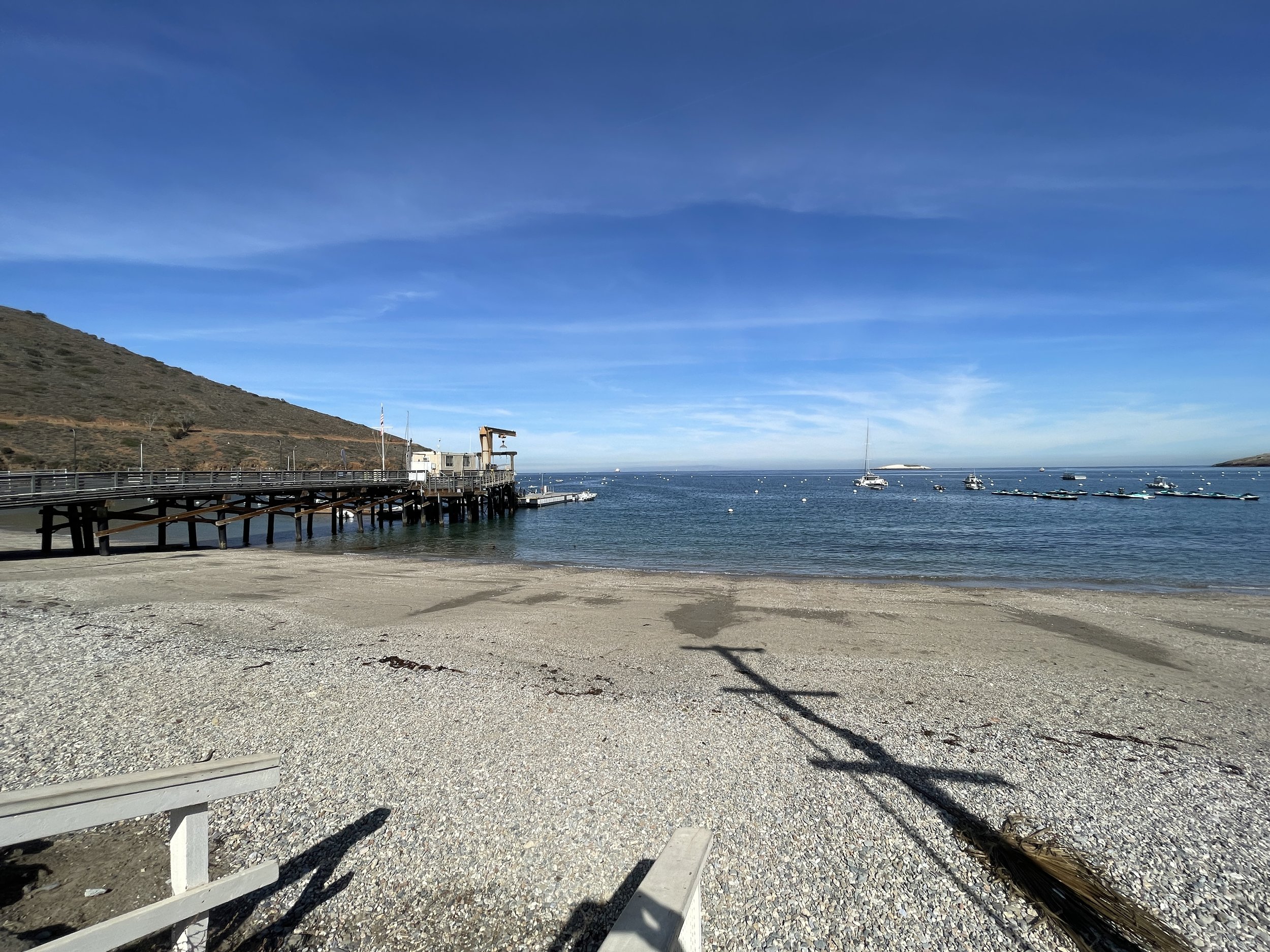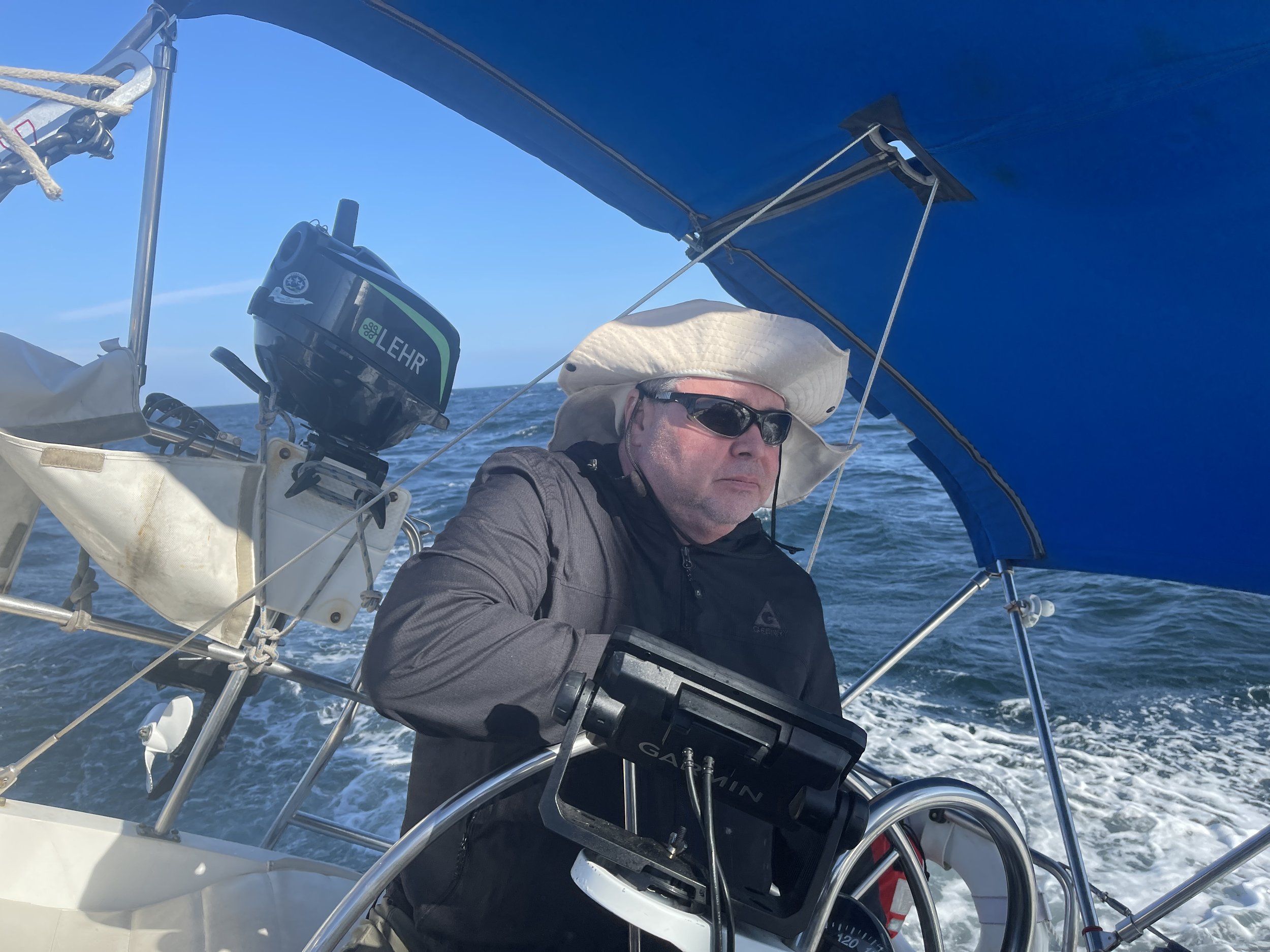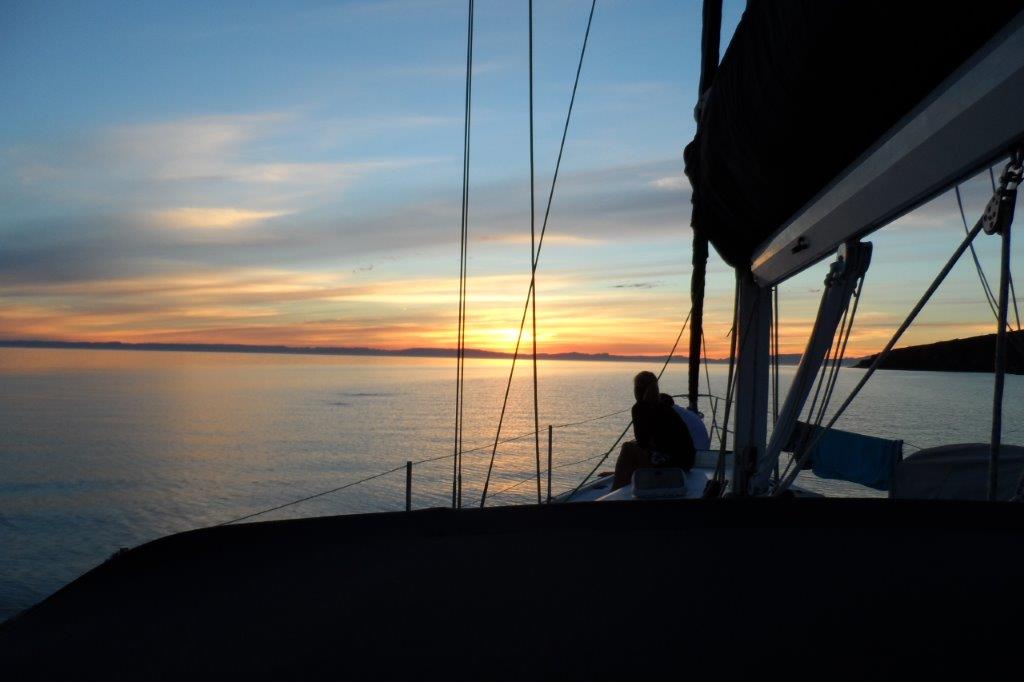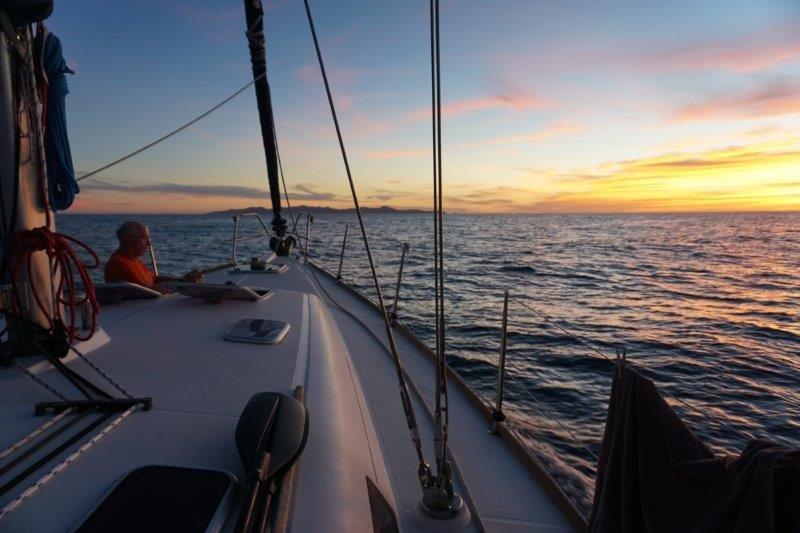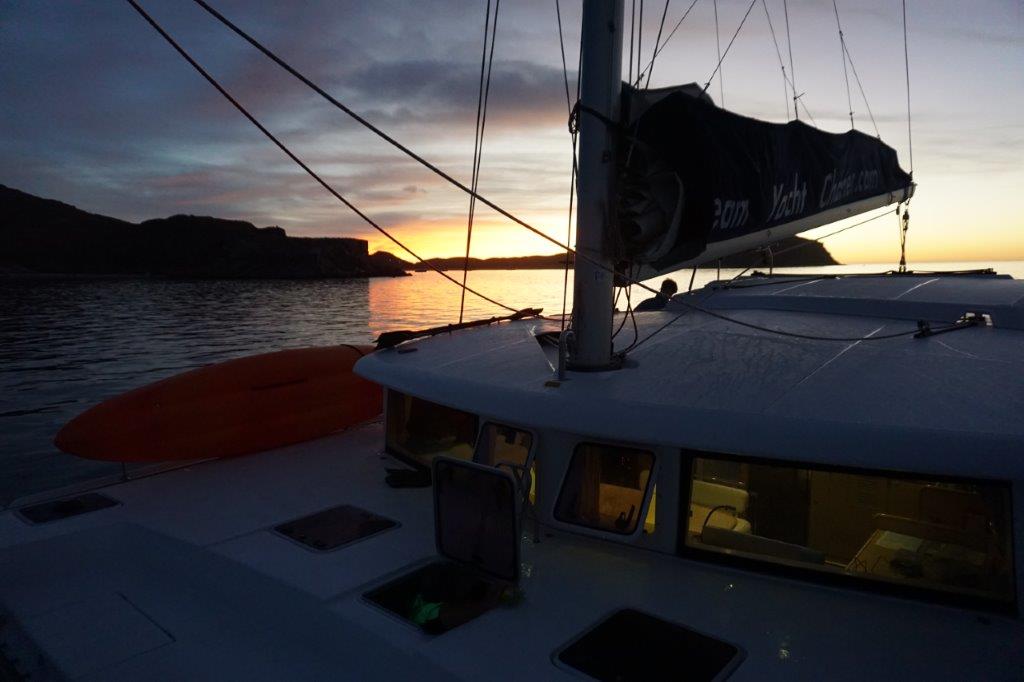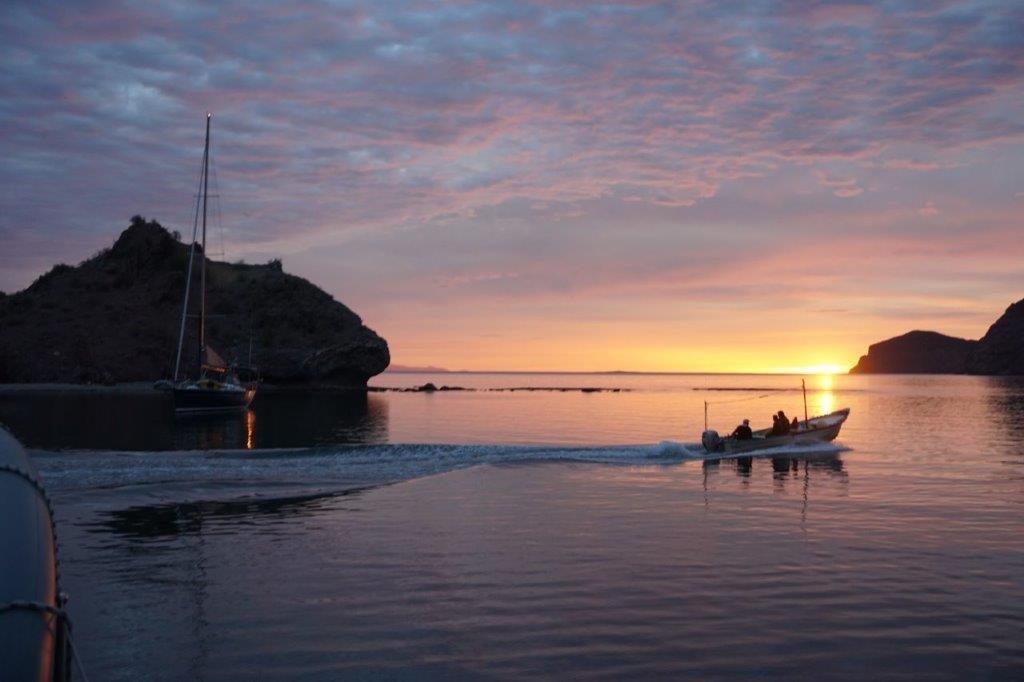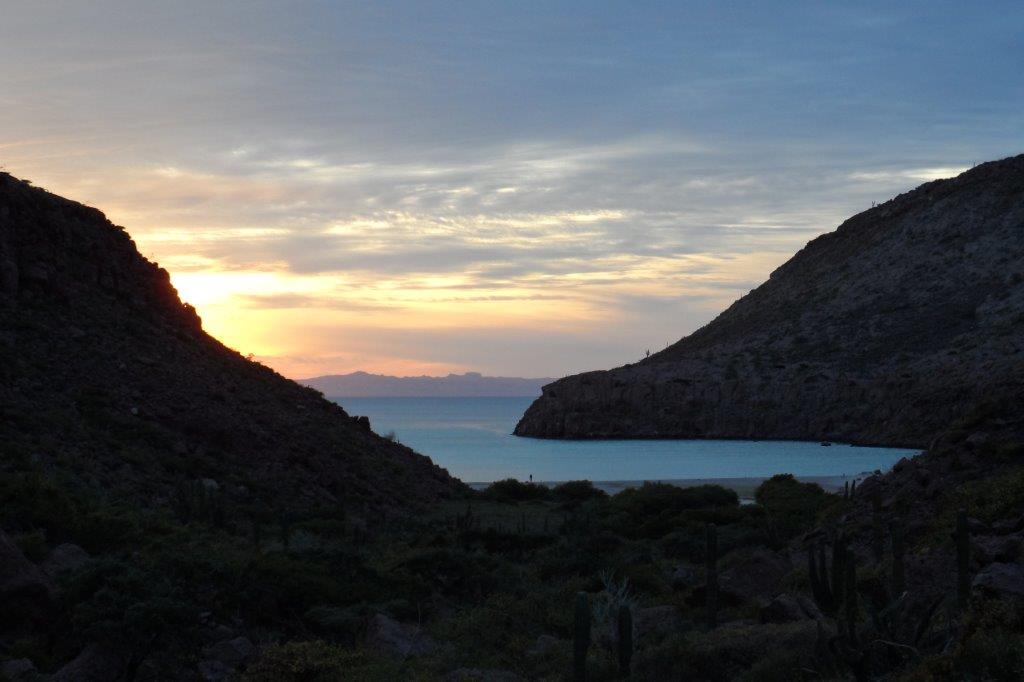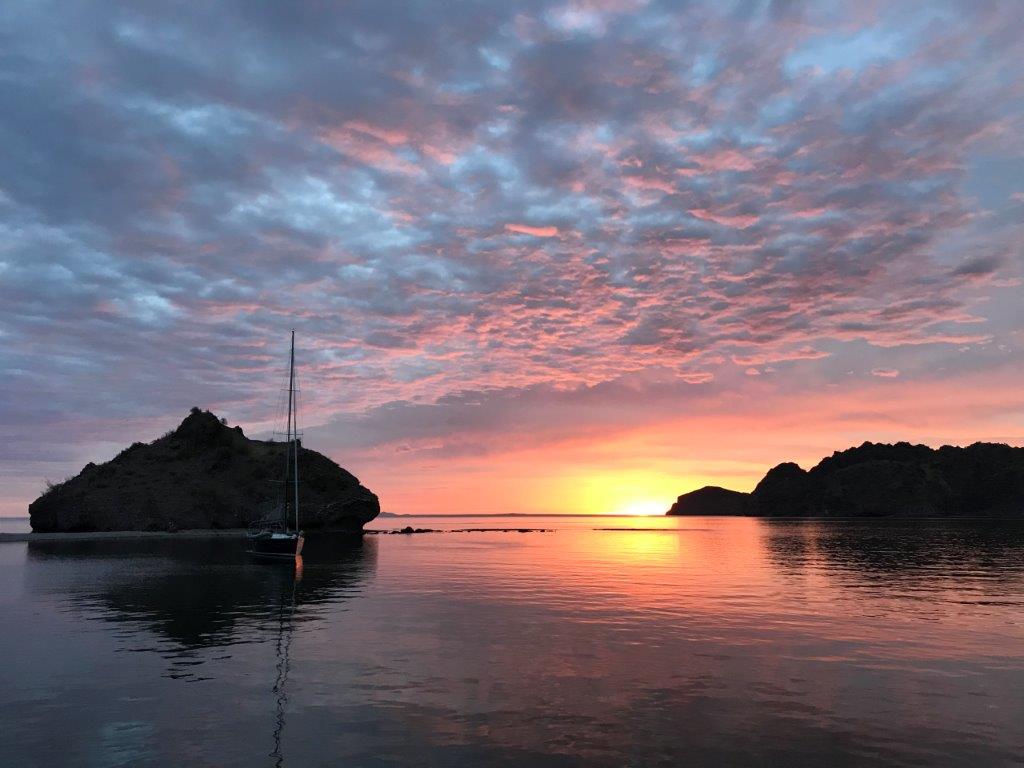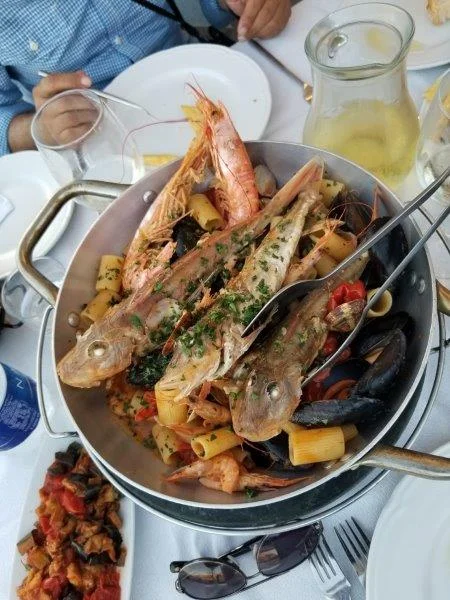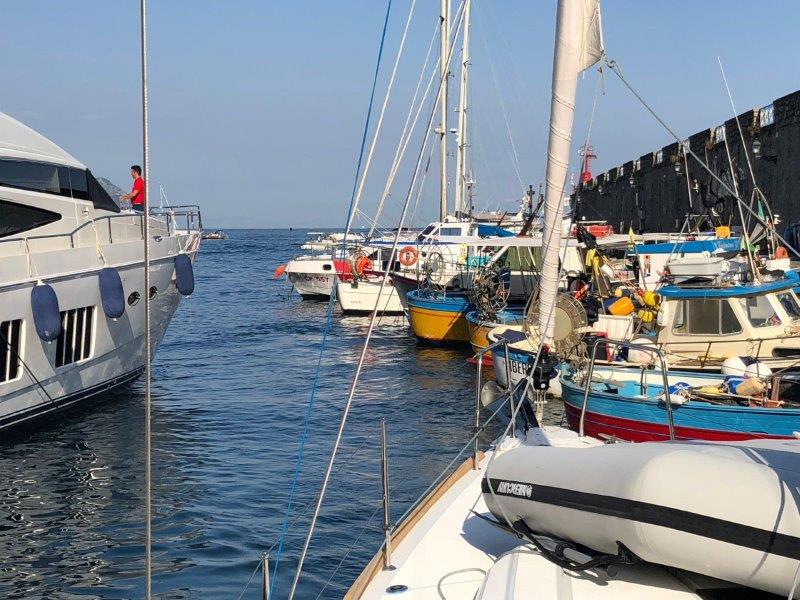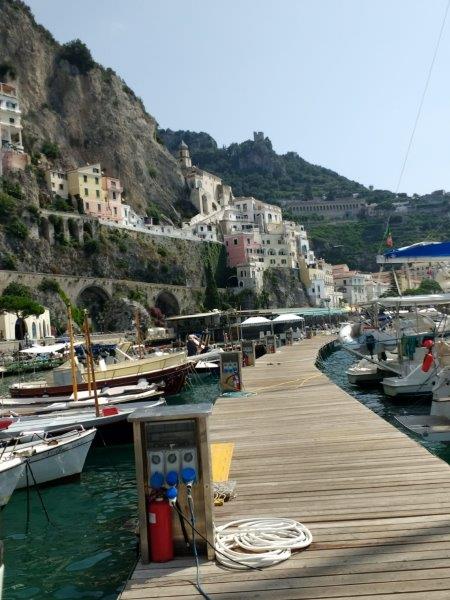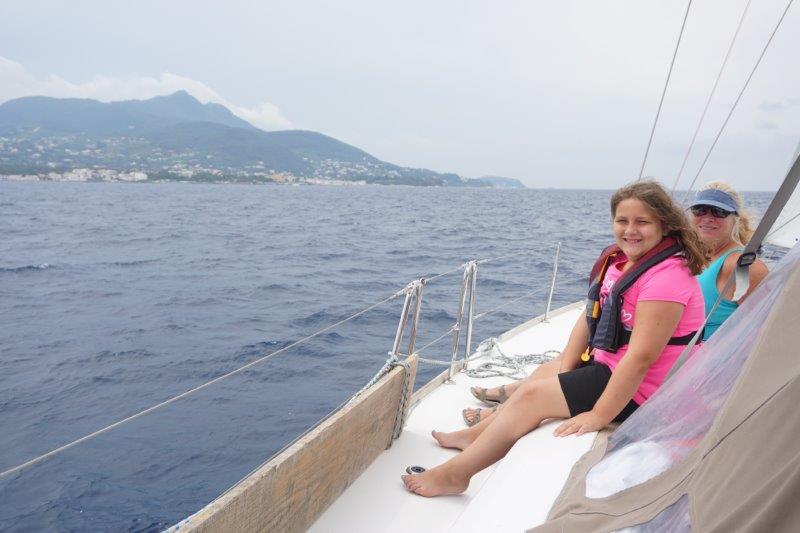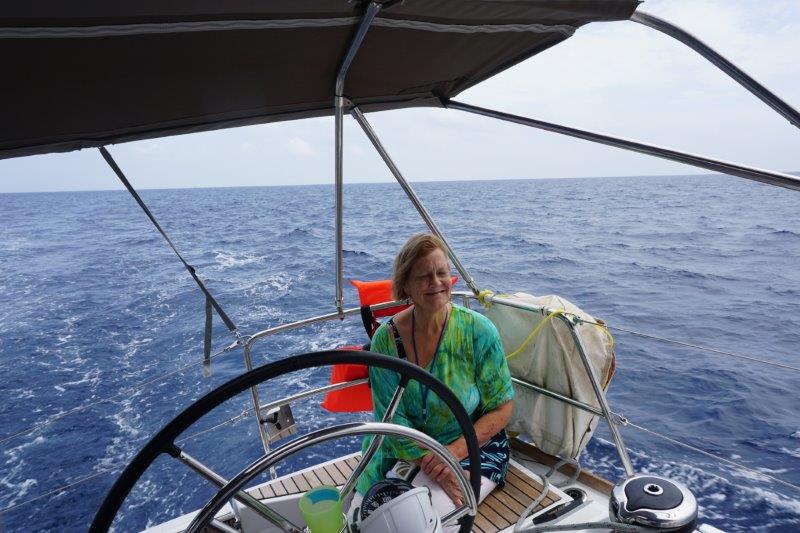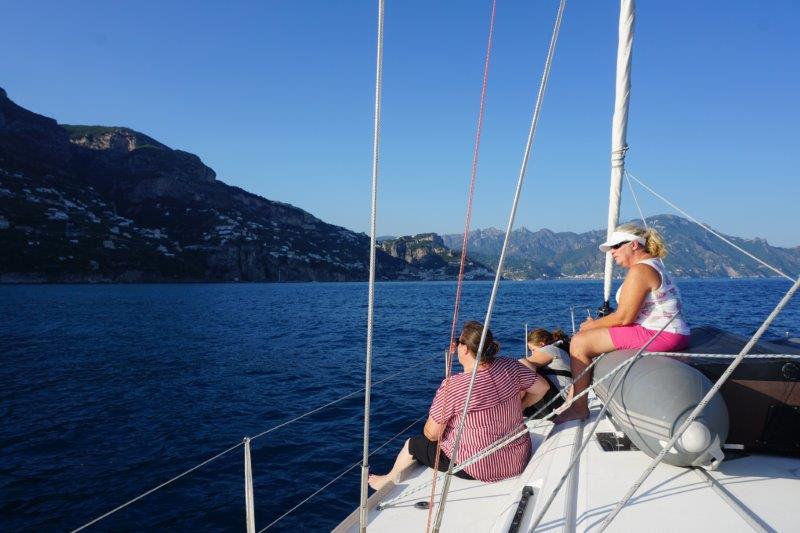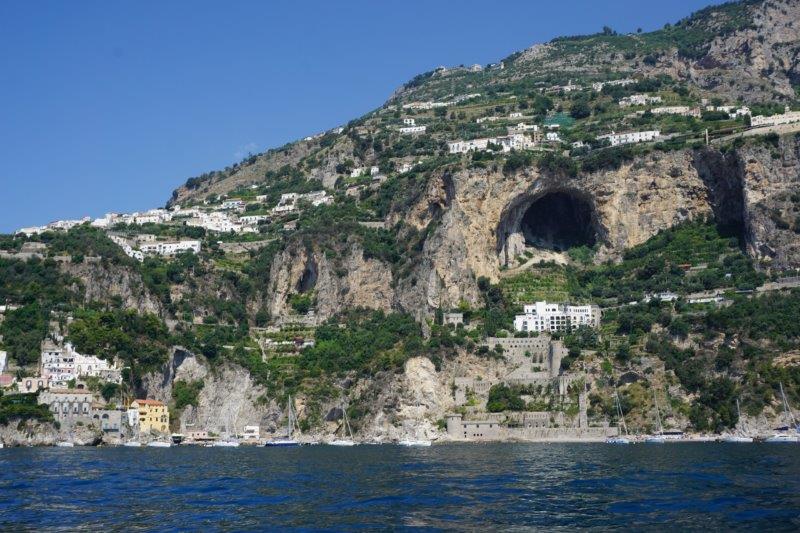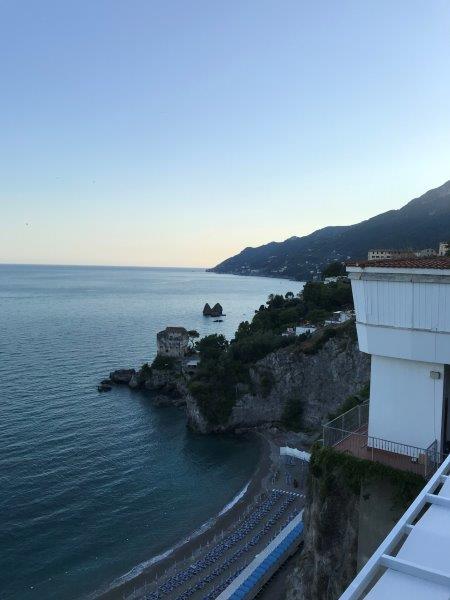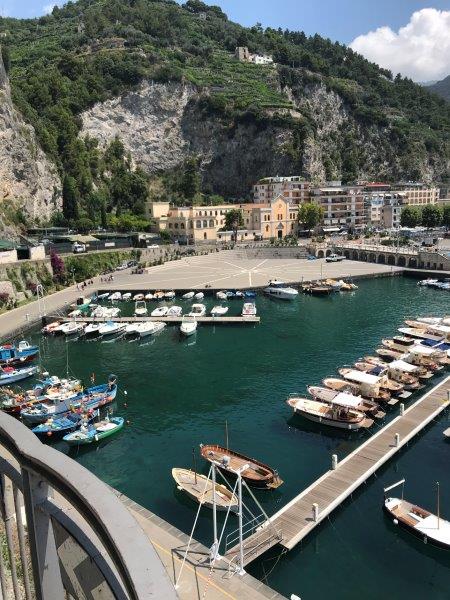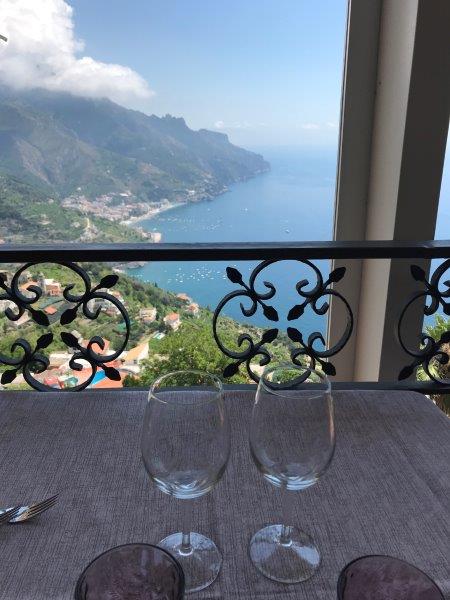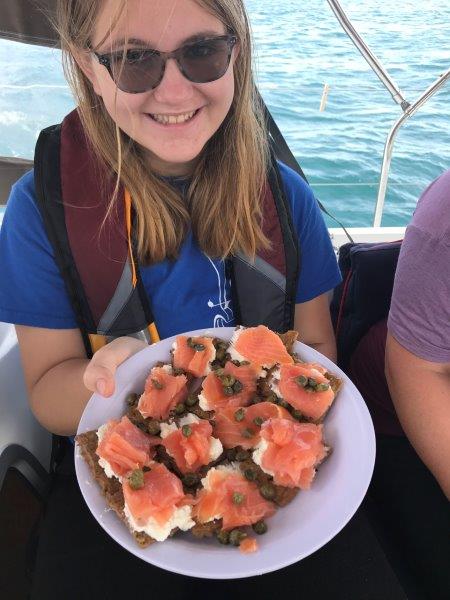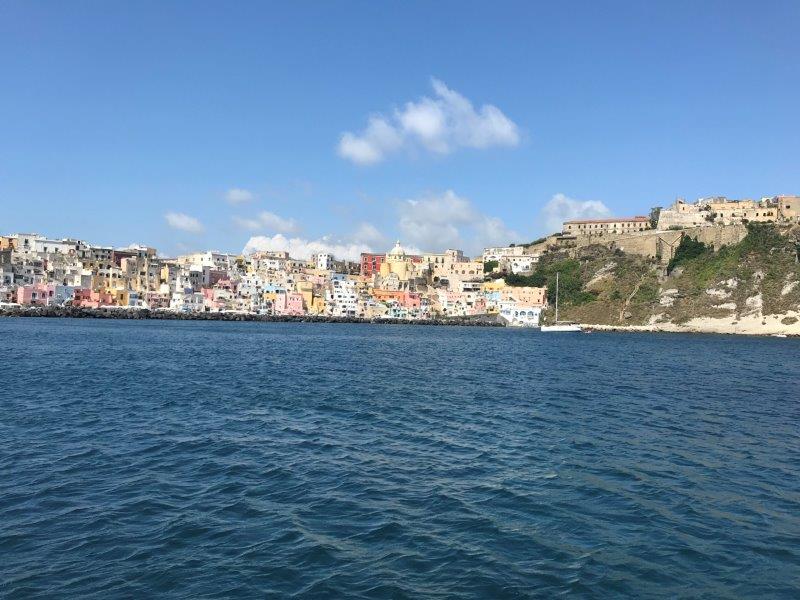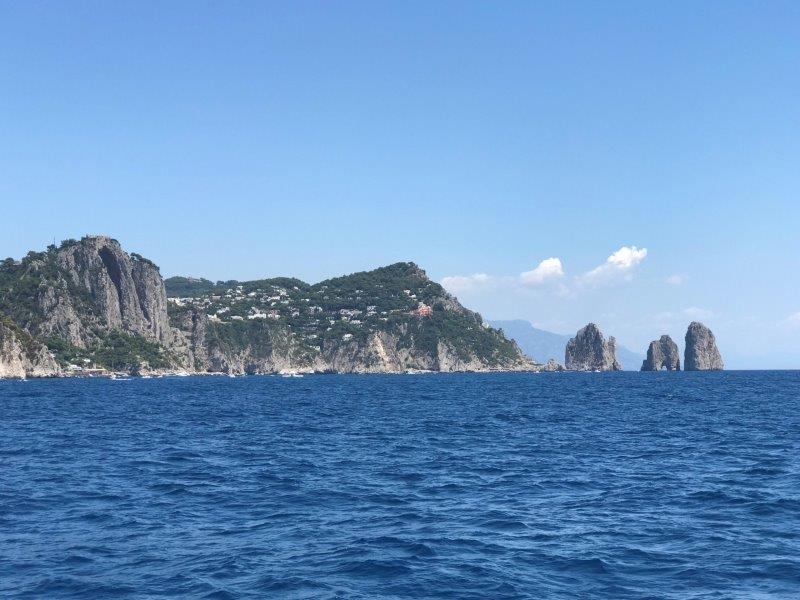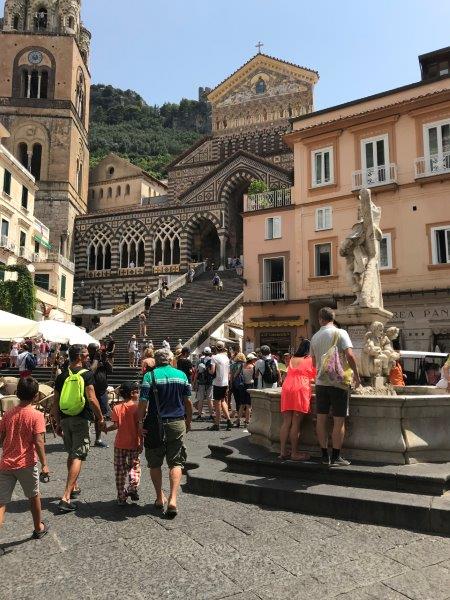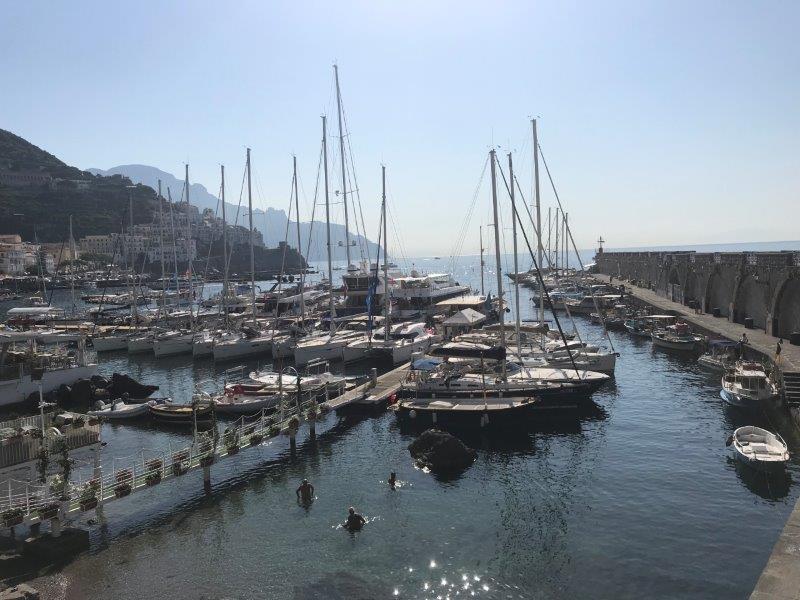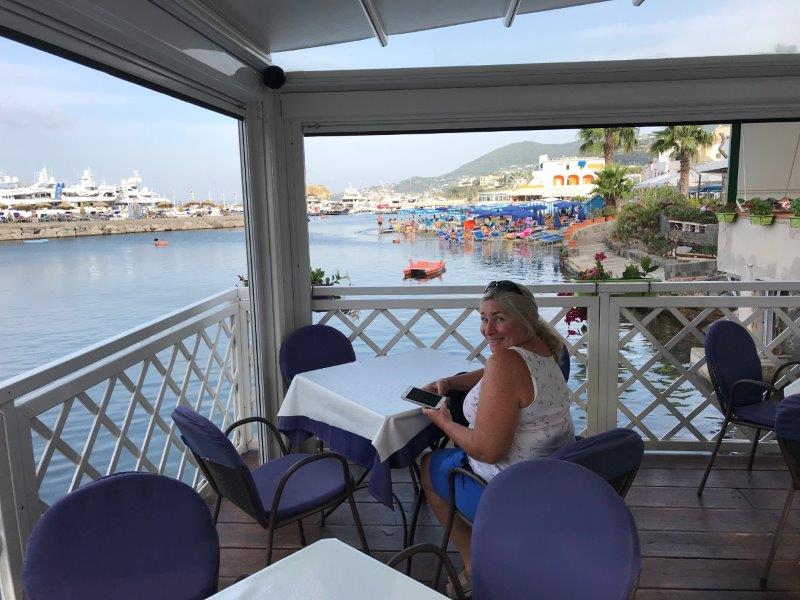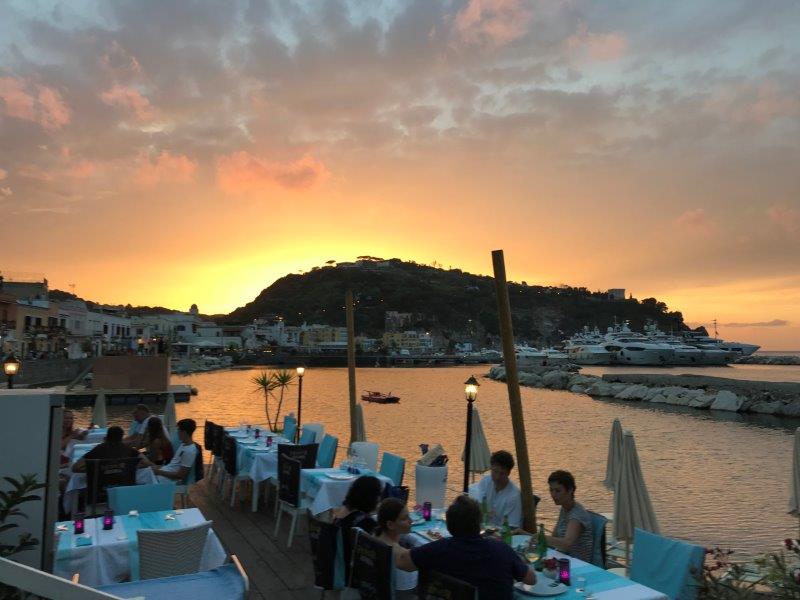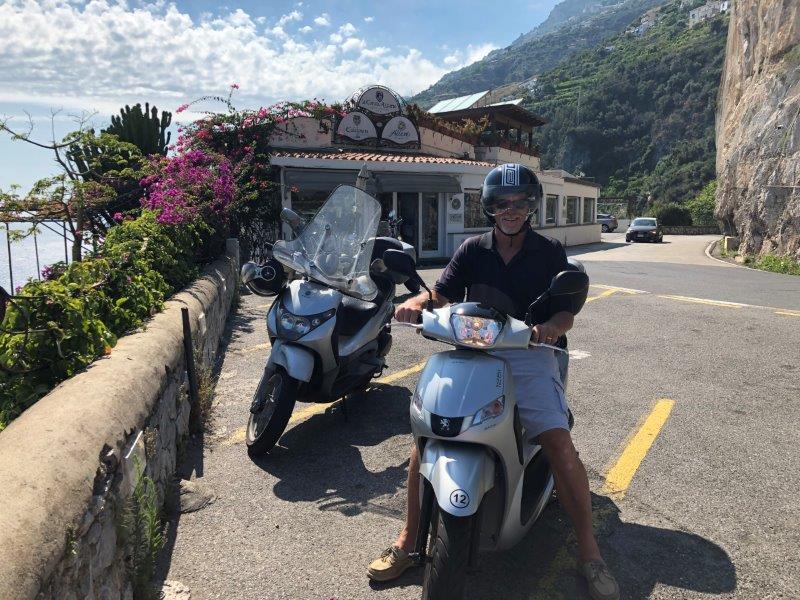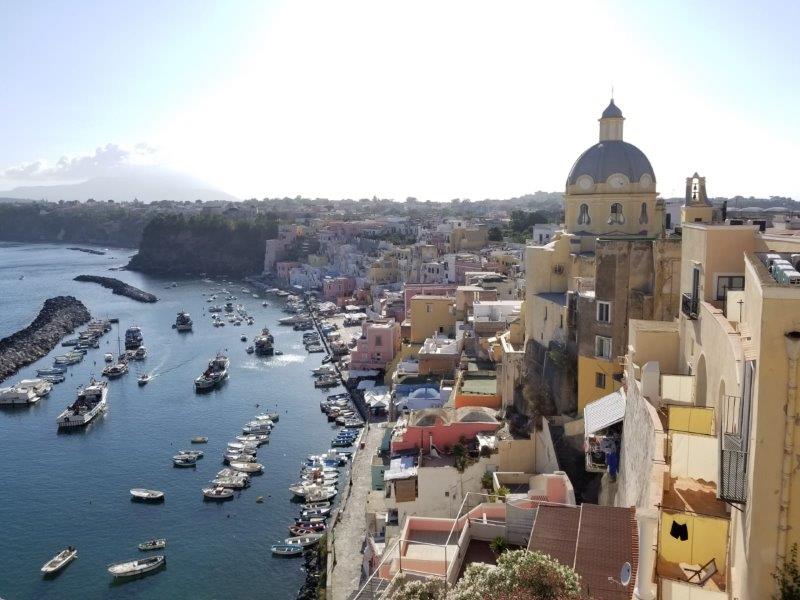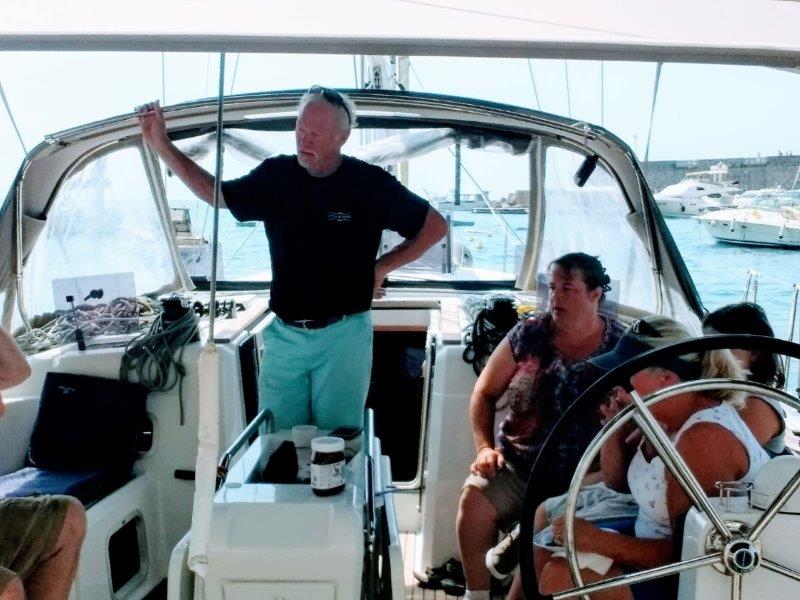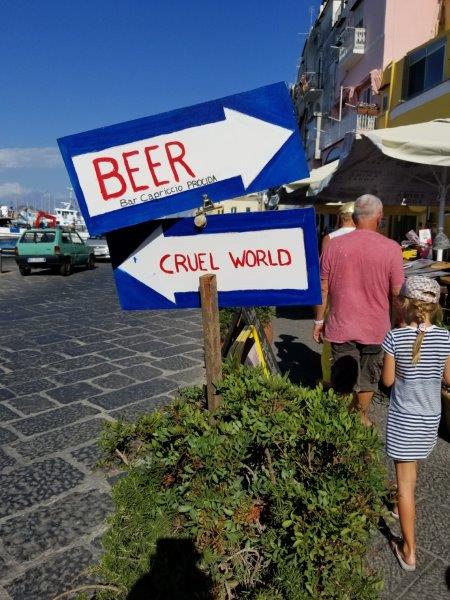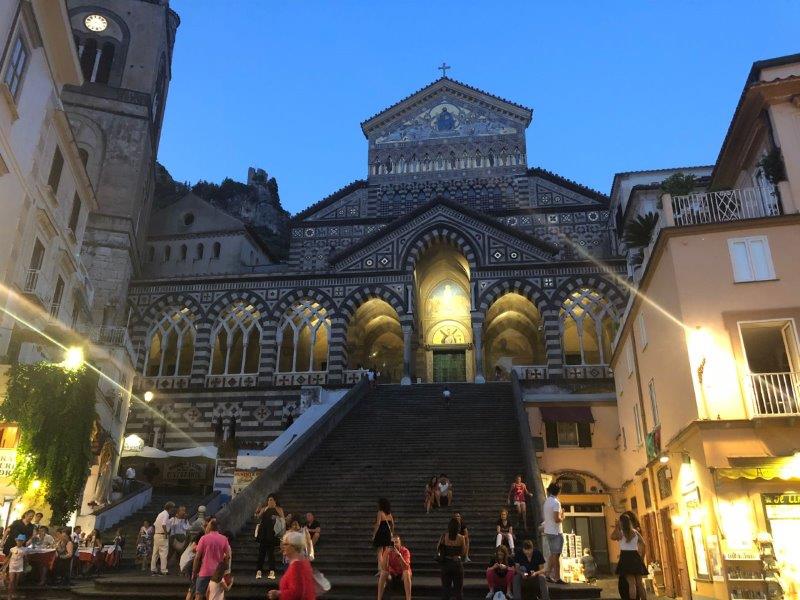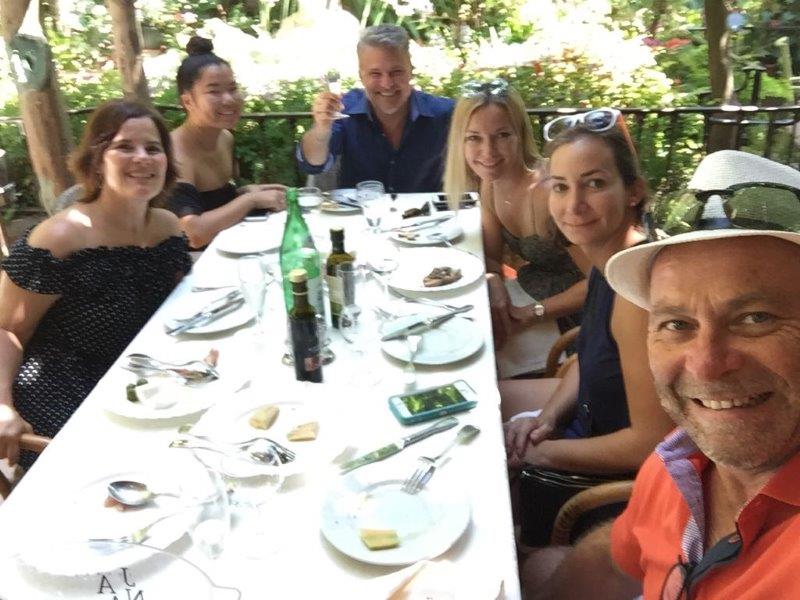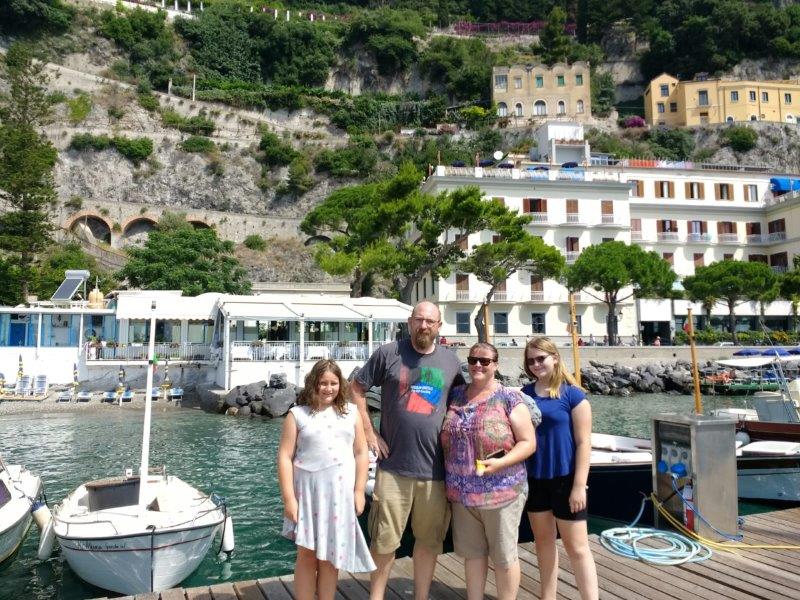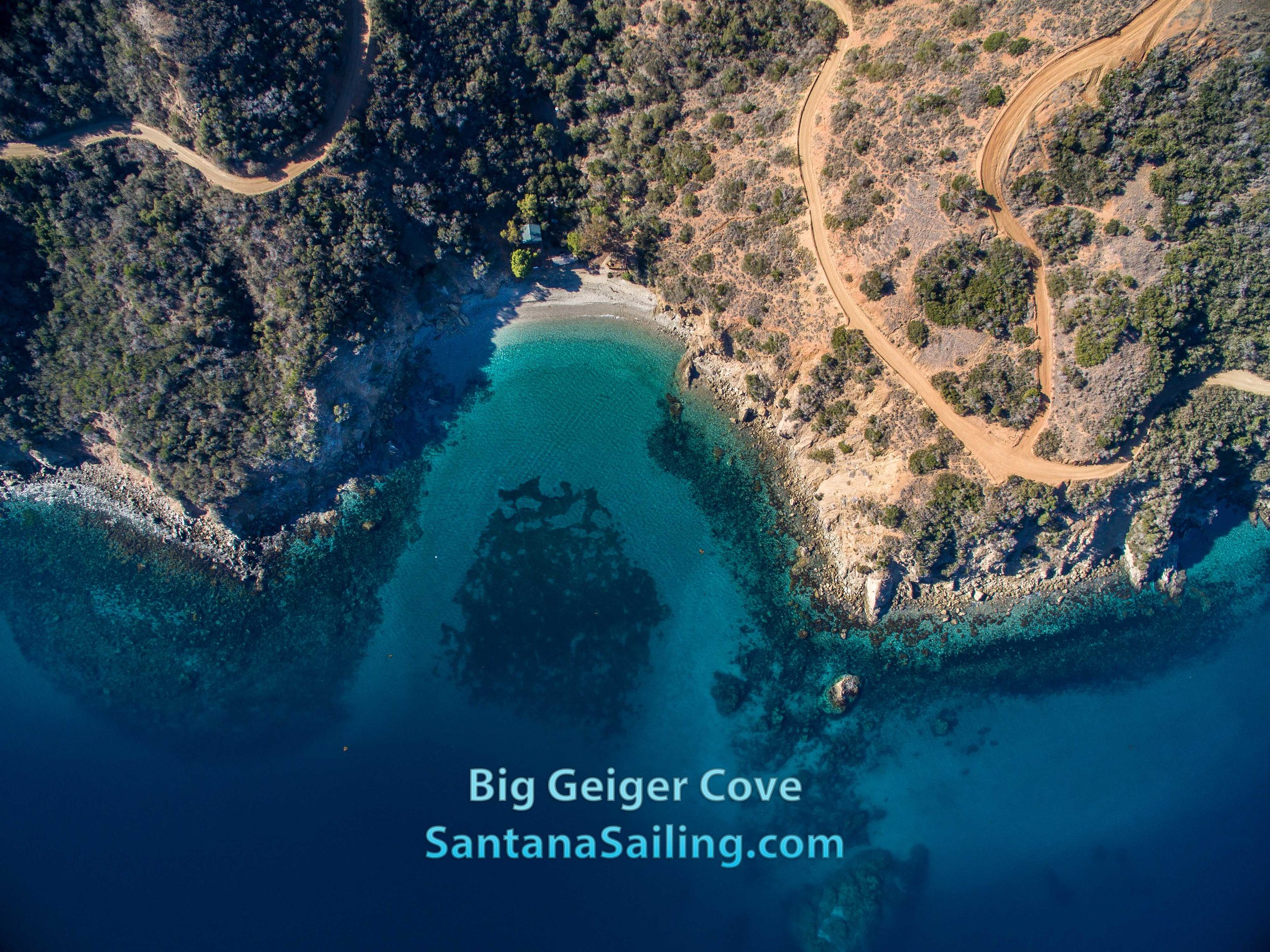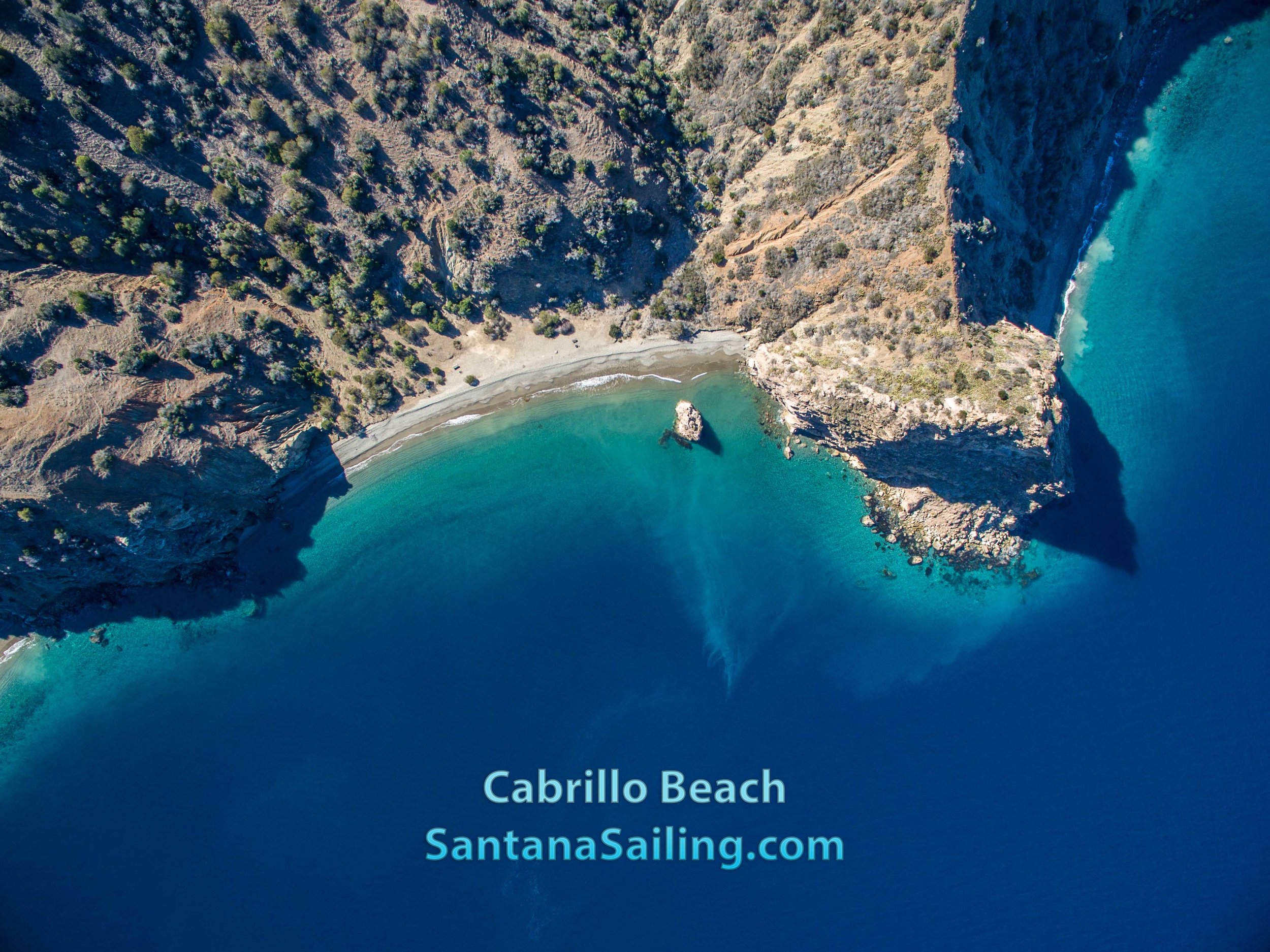We departed Long Beach the morning of October 30 for this year’s eighth sailing adventure in the Northern Channel Islands. Every week of every month in the NCI provides different challenges, and after 20 years of leading sailing trips there, these are my main takeaways: 1) your passage plan must remain flexible; 2) it’s the wind and weather that determines where you can go; 3) crew experience level and training objectives have a significant impact.
This time of year, there is often a difference between what you can do and what you want to do, and that was the case for this 7-day voyage, October 30 – November 5. What I wanted to do was visit the Painted Cave, spend a night at Forney Cove and then Willows, and complete our trip with passages to Santa Barbara Island and Catalina.
The Original Plan
The Original Plan (mileage shown is for straight line segments)
Day 1: Long Beach to Smugglers cove on Santa Cruz Island, 74 NM
Day 2: Smugglers to Cueva Valdez, 20 NM
Day 3: Cueva Valdez to Painted Cave, to Forney Cove, 10 NM
Day 4: Forney Cove to Willows, 15 NM
Day 5: Willows to Landing Cove - Santa Barbara Island, 54 NM
Day 6: SBI to Big Geiger – Catalina, 26 NM
Day 7: Big Geiger to LB, 23 NM
The weather forecast continued to change right up to the day of departure and on that day, it looked like the opportunity to visit the Painted Cave might be closing out. We needed calm conditions when we’d be there in three days, and the forecast was for a building westerly on Santa Cruz. A building westerly would also make it tough to get around the west end of Santa Cruz to Forney Cove. Hmmm.
I also considered our capabilities and training objectives. On this trip we had Brian and Caio, two crew who were already at the Bareboat Charter Master level. While we could choose to make our 15-18 hour overnight passage from Long Beach to Santa Cruz on the first leg, we didn’t have to. And since it was likely to be windy on our third morning, there was no point in rushing up to position ourselves near the Painted Cave.
We talked about these issues, and it was easy to decide to do things differently. We’d sail first to Catalina, then to Santa Barbara Island, then to Pelican Bay on Santa Cruz, and decide just how to continue from there.
Once on the north side of Santa Cruz, the forecast was showing winds building out of the northwest into the high 20s, gusting to low 30s. That meant that the Painted Cave was out. Should we continue around the west end of Santa Cruz as originally planned? It was decision time. Here is what we had to consider.
The distance from Pelican Bay to Forney Cove was about 15 NM in straight line segments, but it would be straight upwind, and the tacking would double the mileage.
Though we had two reef points in the main and a roller reefing genoa, we would be seriously overpowered going to windward and it would be a long, wet, and difficult day.
Reversing our course and sailing downwind in up to thirty knots would be very fast and though still challenging, much easier.
So, instead of pushing to windward we decided to head downwind to Smugglers on day 4, and that would put us in position on day 5 to ride the strong northwesterly downwind about 70 NM to Catalina. That’s what we did, and we had some adventures on the way.
The Actual Voyage
The Actual Voyage (mileage shown is actual, from the ship’s log)
Day 1: Long Beach to Big Geiger – Catalina, 26 NM
Day 2: Big Geiger to Landing Cove - Santa Barbara Island, 28 NM
Day 3: SBI to Pelican Bay – Santa Cruz Island, 59 NM
Day 4: Pelican Bay to Smugglers, 14 NM
Day 5: Smugglers to Isthmus Cove – Catalina, 67 NM
Day 6: Stayed on the mooring at Isthmus Cove
Day 7: Isthmus Cove to LB, 23 NM
Highlights: Pelican Bay to Isthmus Cove
On day 4 we departed Pelican Bay at about 13:00, and by 14:00 we recorded winds at 27 knots. We had just a full genoa up and were making 7-8 knots over the ground, even recording brief bursts of 11-12 kts as we slid down the swells. It was a trouble-free ride until we rounded the east end of Santa Cruz and began rolling up the aging headsail. The sail flogged as we brought it in, and a big tear opened on the leach. We finally got it rolled up all the way and tried to motor into Smugglers, but with 27-31 knots on the nose we were getting nowhere. So, we kept the engine on and partially unfurled the genoa. That enabled us to motor-sail into the anchorage, but the tear on the leach got bigger.
The tear in the leach grew bigger as Day 5 progressed
On day 5 we departed Smugglers at 06:27, bound for the Isthmus, with northwest winds 10-12 that increased into the high 20s touching 30. We don’t know for sure because the anemometer quit spinning at some point. With a full but torn genoa and the mainsail stowed, we each got our workouts doing half-hour rotations on the helm. The seas built to 10-12 feet, and at one point we hit 13.9 knots speed over ground while sliding down a large swell. Wow! We made it into the Isthmus about 16:20, covering about 70 NM in about 10 hours, and picked up mooring C9. What a relief. We still needed to change to the spare genoa for the trip back to Long Beach, but that would wait. It was time to go ashore.
On Day 6 we stayed on the mooring, rested, ate well, and changed the headsail. Day 7 had light winds and we motored most of the way back to Long Beach.
Takeaways From the Trip
A wind forecast is just a forecast, and while it’s a good predictor of the overall trend 7 or more days out, it is much more accurate 1 to 2 days out.
Position yourself so that when the strong blow comes, you can take advantage of the speed it offers by going downwind.
Fall in the Northern Channel Islands means keeping your passage plan flexible.
It’s been said that if you can cruise California’s Northern Channel Islands, you can cruise anywhere. And even when you know the territory, remember that it’s the wind that determines where you can go, your crew and objectives have a big impact, and staying flexible really pays.
See pics and video from this trip on the Santana Sailing Facebook page
See the Channel Islands tab on the website to see what’s on the schedule, and join us for a sailing experience that will add to your confidence and competence.
Marc Hughston, Chief Instructor





